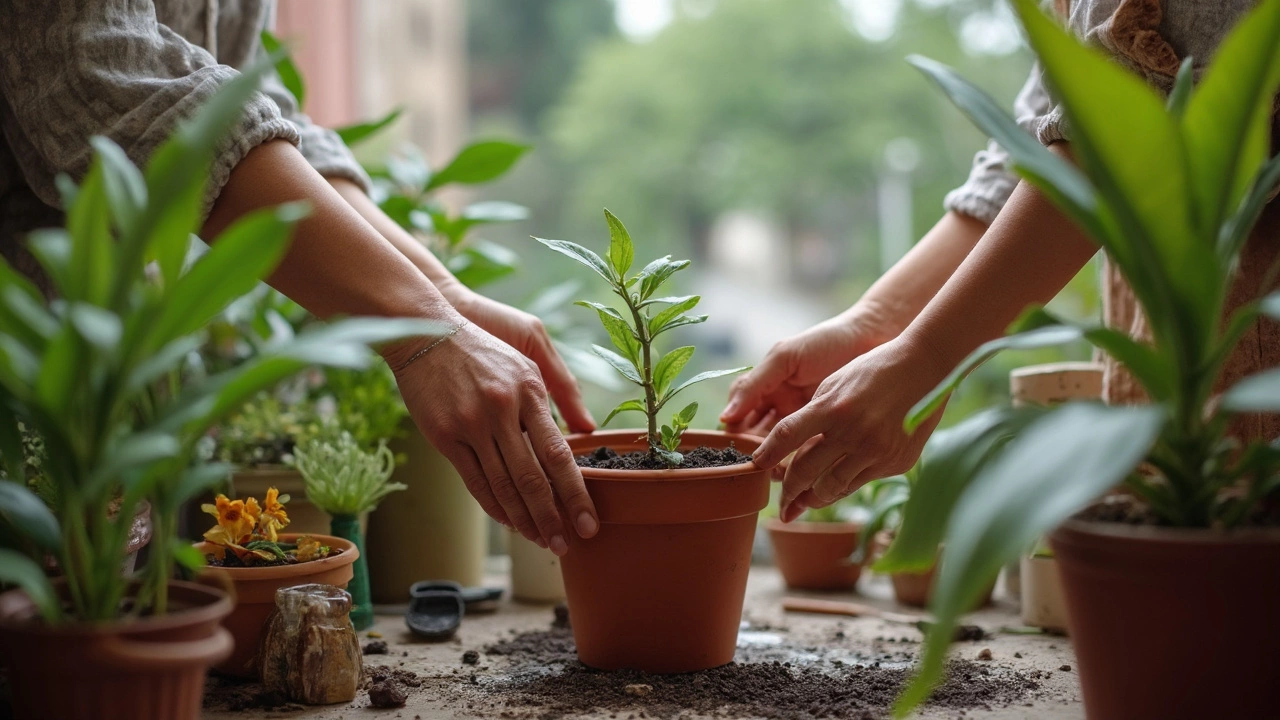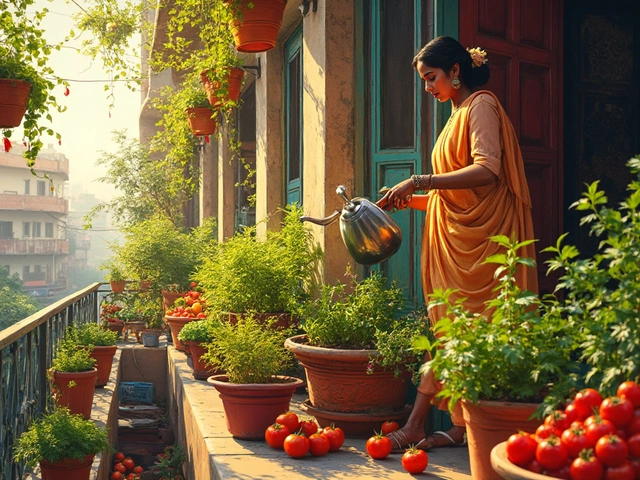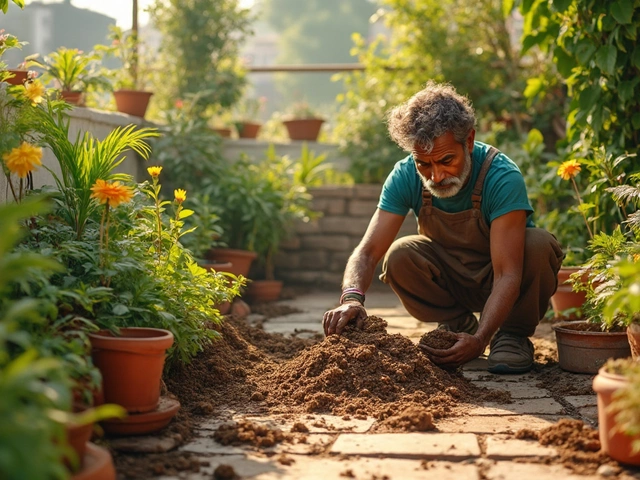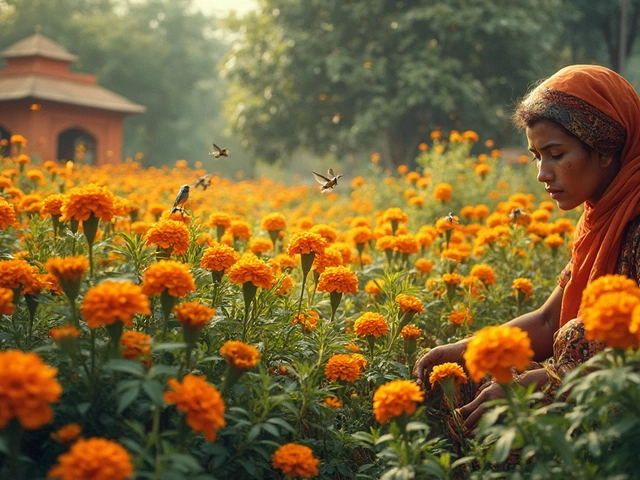Best Houseplants for Beginners and Enthusiasts: Top Choices for Every Space

Best Houseplants for Beginners and Enthusiasts: Top Choices for Every Space
Plants get mistaken for just simple decoration, but let’s be honest – picking the best houseplant is like choosing a roommate who doesn’t make noise or borrow your stuff. The right green companion can boost your mood, trim down toxins in your air, and make your living room look alive even if everything else is falling apart. You could grab a rubber plant because your friend swears by theirs, but is it really the best for you? The answer is, well, complicated – but not impossible. It’s all about matching your lifestyle, your patience level, and the vibe you want at home. Since you’re here, let’s walk through the actual truth: what makes a houseplant the best, and why the answer isn’t the same for everyone.
What Makes a Houseplant "the Best"?
Some folks argue that the best houseplant is the one you don’t accidentally kill. Others think it’s all about aesthetics – glossy leaves, elegant stems, that perfect Instagrammable look. Honestly, it boils down to three big buckets: care level, benefits (like cleaning up your air), and visual appeal. But wait, did you know NASA actually ran a Clean Air Study in the '80s looking for the best plants to scrub chemicals from sealed environments? According to their findings, species like the snake plant (Sansevieria) and peace lily (Spathiphyllum) pull toxins like benzene and formaldehyde out of your living space. So, if breathing easier is your goal, those are top contenders.
An ‘easy’ houseplant thrives even if you forget to water it for a few days. The pothos, for example, more or less grows itself. It’s basically the golden retriever of plants – loyal, friendly, totally forgiving. On the flip side, if you live for a challenge, a fiddle leaf fig can kick your butt, demanding light, humidity, and the right spot (or else it pitches a dramatic leaf-dropping tantrum).
Selecting the best houseplant depends a lot on your living situation. If you’ve got cats or dogs who nibble, steer clear of poisonous beauties like dieffenbachia or sago palm. Got a southern-facing window? Hello, cacti and succulents. Living in a studio with barely any light? ZZ plants and snake plants don’t mind at all.
There’s also the emotional good stuff. Some studies have shown that tending to plants can lower stress, boost your focus, and even make you feel happier. Not all benefits can be measured, but if you feel better staring at a monstera shaped like a living piece of art, that counts for something.
Low-Maintenance Winners: Plants You Can’t Kill (Probably)
If your last three ferns came home and barely made it through the month, you’re definitely not alone. Low-maintenance houseplants are the heroes here. Let’s go through a few battle-tested options that even notorious plant murderers can keep alive:
- Snake Plant (Sansevieria): These sword-shaped leaves almost never flop. They tolerate dark corners, hate being watered, and even put up with your forgetfulness. According to NASA, they’re also ace air purifiers, so they get points for that.
- ZZ Plant (Zamioculcas zamiifolia): The Bruce Willis of plants – tough, resilient, and looks good in a suit (well, maybe not the suit, but it always looks cool). Green glossy leaves, no fuss if you skip a watering or two or five. This plant shrugs off abuse and keeps on going.
- Pothos (Epipremnum aureum): Sometimes called devil’s ivy, this plant grows like crazy. Forget to water? No problem. Want to cut a piece and stick it in water to grow roots? Easy. With variegated leaves ranging from marbled white to neon, it’s a fast way to perk up a shelf.
- Spider Plant (Chlorophytum comosum): These produce baby "spiderettes" you can pot to multiply your collection. They’re adaptable to all light conditions, and even thrive if you pretend they don’t exist for weeks.
- Peace Lily (Spathiphyllum): Not just beautiful, with its white hooded blooms, but known for its ability to soak up pollutants like acetone, xylene, and ammonia. Underwater it and it wilts, but one drink and it perks up like nothing happened.
Best hack: if you go on vacation, water these guys right before leaving, and most will still look perky when you’re back. Just keep them away from cold drafts and make sure the pots drain well to avoid root rot. As for watering, more plants die from kindness (too much water) than neglect. Stick a finger in the soil up to your first knuckle. If it’s dry, it’s time for a drink.

Air Purifying Houseplants: Fact or Fiction?
All plants clean the air, right? Sort of. Some just do it better than others. The whole "air purifying plant" craze came after that NASA study I mentioned, but the truth is, while plants remove some toxins, they’re not exactly magic vacuums. Still, if you fill your apartment with the right plants, it does add up.
Here’s a quick table of superstar air purifiers from the NASA study:
| Plant Name | Best At Removing | Low Light Friendly? |
|---|---|---|
| Snake Plant | Benzene, Formaldehyde, Xylene, Toluene | Yes |
| Peace Lily | Ammonia, Benzene, Formaldehyde | Yes |
| English Ivy | Benzene, Formaldehyde, Trichloroethylene | No |
| Bamboo Palm | Formaldehyde, Xylene, Toluene | Yes |
Breathe easier, sure – but don’t toss your air purifier just yet. To actually notice a difference in air quality, you’d need a literal jungle of these. But as a supplement? Absolutely worth it. The real win comes from the humidity they add, especially in winter with dry heat blasting all day. Plus, green leaves are just good for the soul.
Best Houseplants for Every Lighting Situation
If you’ve ever watched a plant wither and die on your window sill, it might not be your fault – you may just have picked the wrong species for your light. Morning sun, dappled shadows, north-facing windows, or even under fluorescent lights – different plants thrive in different lights.
- Bright, Direct Sun: Cacti, jade plants, and succulents. South or west-facing windows are plant paradise here.
- Medium, Indirect Light: Monstera deliciosa, pothos, and calatheas. Most living rooms with filtered light work for these.
- Low Light: ZZ plant, snake plant, cast iron plant. Think office corners or bathrooms with almost no natural light.
This is where people trip up: they stick a fiddle leaf fig in a dim corner and wonder why it looks so sad. Nature designed each of these plants for very specific places, so always look up their native habitat. Installing a simple grow light can help – even a cheap LED strip can make a difference for sunlight-hungry varieties.
Keen on an easy win? Snake plants and ZZ plants take the gold again – they seem to grow (well, survive) just about anywhere you stick them. Want a statement plant instead? Look to a monstera for those split leaves, or a rubber plant for glossy drama. Just check that your space can actually keep them happy before committing.

Tips and Surprising Facts for Happier, Healthier Plants
You’ve bought the best houseplant – now make sure it thrives. Start with good soil – not dirt from the yard, but fresh, well-draining mix from the store. Repot new plants after bringing them home to avoid sneaky pests. Grouping plants together isn’t just for the #plantshelfie – it raises humidity as they “sweat” together.
Fertilize sparingly. Once a month during spring and summer is enough for most varieties. Don’t overdo it or the leaves might burn. Rotate your pots every couple of weeks for even growth – otherwise your plant might lean toward the light and get lopsided.
Did you know coffee grounds are great for some acid-loving plants, but spell doom for others? Use with care – you’re not making espresso, you’re fertilizing. Also, surprisingly, a recent 2024 survey showed that 68% of new houseplant owners bought their plants during the pandemic, but only 1/3 managed to keep their first plant alive a full year. Most common reasons for failure? Overwatering, and using pots with no drainage.
And if you want your plant collection to really shine, wipe those leaves every month. Dust blocks sunlight, and you don’t want your new fern to suffocate under a layer of grime. While you’re at it, check under leaves for signs of spider mites – if you see webbing, a quick shower in the sink and a spritz of neem oil clears them up.
Don’t get discouraged by a dropped leaf or a yellow patch. Every plant goes through awkward phases (just like most middle schoolers). Stick with it, pay attention, and soon you’ll have a collection full of “best” houseplants – because the best one is the plant you enjoy growing every day.
About
Gardener Support India is your go-to online destination for expert advice on gardening and horticultural services in India. Whether you're a beginner or an experienced gardener, our platform offers extensive resources, tips, and support tailored to Indian climates and plant species. Explore a wide range of guides on plant care, sustainable gardening practices, and innovative gardening solutions. Connect with local experts to enhance your gardening experience and maintain a flourishing garden. Our dedicated services aim to empower Indian gardeners with the knowledge and tools needed for a successful gardening journey.
Latest Posts


Unlocking the Secrets of Regenerative Gardening for a Greener Planet
By Alden Thorne Nov 24, 2024

Unique Indian Bottle Gourd: A Gardening Treasure
By Alden Thorne Jan 1, 2025

Mixing Top Soil with Garden Soil: Smart Tips for Terrace Gardening
By Alden Thorne Apr 1, 2025

Write a comment